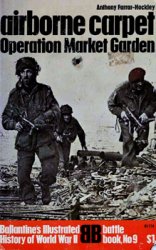Archaeology and Texts
The archaeology of Mesopotamia is inseparable from its contemporary texts, comprising economic, administrative, legal, historical, and literary documents. This rich textual corpus adds nuance and detail to archaeological materials; while the archaeological record offers a valuable check to the often institutionally biased or selective texts. The political histories are strictly narrative, describing events and royal actions, which may or may not have affected people’s daily lives. But economic and administrative texts, although restricted to transactions and situations deemed worthy of recording for the future, are more relevant for them. Literature and myth offer insights into the reasons behind modes of burial, for instance, while instruction texts illuminate both agricultural techniques and religious ritual. Even vocabulary lists open a window into the Mesopotamian mind, indicating important categories and value assignments; even the absence of some terms (notably including ‘artist’) is revealing.
The texts themselves, clay tablets, are archaeological objects, and information on their associations and context are as vital for their full comprehension as this information is for an understanding of art or ceramic assemblages. Both palaces and temples held libraries including both current and ancient texts. Although the majority of the population would have been technically illiterate, oral traditions were strong, and knowledge of past history and cultural traditions was part of being Mesopotamian.
Early Complexities and Urbanism
Mesopotamia presents the world’s first state and empire. It was also essentially an urbanized society. Excavations in northern Mesopotamia (Syria) are pushing back the earliest known urban settlements into the fifth millennium BC, earlier than those currently known for southern Mesopotamia. For example, monumental architecture, industrial pottery production, and organized obsidian import were present at Tell Brak in the fifth millennium BC. But the absence of recent excavations in southern Mesopotamia may introduce a bias. The date and location of the earliest city may eventually be as debated as are the date and location of the earliest domesticated grain.
But there is a more serious issue awaiting resolution, whether these cities were primarily economic, religious, or political in origin. Urbanization also means ruralization. The urban-rural dynamic demands further exploration if it is not to be viewed as a onesided exploitation of hinterland by urban center.
The Built Environment
Besides cities and ziggurats, the other human impact on the landscape, particularly in southern Mesopotamia, would have been irrigation canals. As irrigation was essential to agricultural life, canals would have had great resonance and meaning for fertility and continuity. Larger canals were vital transport and communication routes from cities to supporting towns and villages, as well as between cities. With fish and reed-beds they present an exploitable ecosystem distinct from adjacent agricultural lands. From the third millennium BC, kings claimed credit for construction and extension of canals, as well as construction of city walls or temples; control of water conveys extraordinary power and became a cornerstone of political ideology.
Ziggurats and canals offer an opposing pair of images: mountain-like peaks and extended semisubterranean linear devices. Human building activity has impacted both the sky and the earth. It is therefore somewhat surprising that Mesopotamians considered cities and canals to be gifts from the gods.
Archaeology of Religion
Temples physically dominated many cities and crowd the excavated archaeological record in Mesopotamia. The model of a temple-state, a world owned by temples and controlled by priests, was cast off long ago, but temples were undeniably material in the success of Mesopotamian urban life. Yet visits to neighborhood shrines and performance of small-scale rituals probably constituted the primary religious experience for many. The line between religion and magic was blurred, with incantation figurines and foundation deposits occupying the frontier.
Mesopotamian religious belief invoked a pantheon of deities, primarily agricultural, astral, or pastoral and also, unusually, linked with man-made objects or concepts such as tools, irrigation, or the weaving loom. Deities were conceived of as anthropomorphic and were often portrayed in third-early second millennia artworks in human form, marked as divine only by horned crowns. Later, deities were reduced to symbols as the relationships among gods, kings, and the rest of the population developed.
Power hierarchies among the gods mirror political hierarchies among humans. Mesopotamian religion changed over time, some deities rising in power while others faded. Political power was usually implicated: Marduk, an obscure agricultural deity, replaced Enlil of Nippur in the Creation Epic and in the highest position of authority as his city, Babylon, rose to prominence in southern Mesopotamia in the later second millennium BC.
Mass Production and Trade
Some early cylinder seals (Late Uruk) show schematic scenes of lines of women involved in weaving. This is supplemented by texts from temple and palace contexts across the millennia that refer to weaving institutions and the trade of large volumes of graded and specified textiles. The extreme standardization of shape and volume of many ceramic vessels across the late prehistoric and historic periods - along with the absence of kilns in domestic contexts - points to mass production of pottery. But the question of whether mass production meant attached or independent specialists has not yet been satisfactorily answered. The same question arises with regard to other modes of craft production, such as metallurgy.
With mass production comes trade, and Mesopotamian trade involved both locally produced basic necessities (bricks, pottery, textiles, agricultural products) and imported luxuries. Urban institutions undeniably played a large role in the exchange of both types of goods and were the major siphons for and consumers of the latter. Sargon of Agade boasts of ships from Magan and Meluhha (probably Oman and the Indus Valley) coming to his capital, and urban public buildings are the main contexts in which exotic materials and objects are found. But the extent of private trade and barter is surely under-represented. The Ashur-Anatolia trade documentation presents an image of sophisticated profit-driven and speculative economic behavior entirely run on a private basis, and it is unlikely that this was an isolated episode.
Shifts in popularity of imported raw materials can be difficult to explain. Carnelian all but disappears after the Akkadian Period, but the reason may lie with events in the Indus Valley, in Mesopotamia or the Gulf. The royal and religious monumental artworks of the Old Babylonian Period are overwhelmingly of dark stones, black limestone, or steatite, a contrast to the more variable and frequently light-colored stones of the third millennium. This shift may have been intended to give a somber serious impression, but it may suggest closure of access routes for white limestone.
Pastoralism and Urbanism
Pastoral groups appear in textual material, particularly in the late third and early second millennia BC, but remain archaeologically invisible in the continuously recycled Mesopotamian landscape. Texts reveal that urban dwellers sometimes viewed their pastoral-ist neighbors as barbarians who lacked knowledge of cooking or burial. But they were conversely happy to welcome them as members of the army or even as political leaders. Amorites, Kassites, Chaldaeans, and Aramaeans - all with substantial mobile components - serially infiltrated southern Mesopotamia and ended up in political control. Mobile tribes in northern Mesopotamia seem to have been more fragmented and did not usually end up in power, yet the Mari texts indicate their importance to the economy in the second millennium, and Aramaeans eventually appeared in key official positions within the Neo-Assyrian imperial administration.
The economic complementarity between agriculture and herding is better known from ethnographic examples; in the modern Middle East herds graze on harvested fields and contribute fertilizer in return. Temples in the past owned both farms and flocks, and reconstruction of a comparable seasonal movement is plausible.
Continuity and Change
A graph of Mesopotamian political history would describe a ragged and broken line. States shifted and collapsed; empires tended to be hard-won and surprisingly rapidly broken. The capital cities of nations or empires leapt across the landscape, and the focus of these political units shifted with them. These changes would have affected government officials and political elites, yet the archaeological record indicates that often these major political developments had minimal impact on private citizens. Settlement patterns remained the same; architecture and intrasite spatial use was stable; pottery style persisted.
Art had a mixed reaction to political change. Official styles can be identified with specific political regimes. Given the illiteracy of the majority of the Mesopotamian population, imagery was the most effective way to impart political ideology. But sometimes the most eloquent statements were made not by introducing new motifs or styles but by returning to previous ones. An image of king carrying a hod of bricks or mud plaster for construction of a temple appears in the ED and Ur III Periods in reliefs and foundation deposits; this easily read icon reappeared in the Neo-Assyrian Period with Ashurbanipal presented as the rebuilder of Babylon. Similarly, the figure of a defeated enemy prostrate below the feet of the victorious army persists as a piece of visual vocabulary from the mid-third through the late first millennium.
Continuities of style and function also appear in private portable art. Old Babylonian figurines of naked women are virtually indistinguishable from those of the Neo-Babylonian Period despite a millennium of separation. Their function (love or fertility charms) also remained unchanged over this time, testament to the immutability of less-formal systems of belief. There are also continuities in literary traditions; the Epic of Gilgamesh, a musing on the pleasures of friendship and inevitability of death, had a life of at least 1000 years.




 World History
World History









